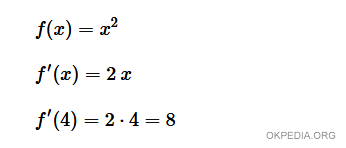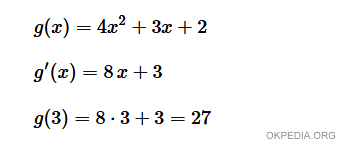Calculating the Derivative at a Specific Point Using Python
To compute the derivative of a mathematical function f(x) at a specific point using Python, one can utilize the `derivative()` function from the `misc` module of `scipy`.
from scipy import misc
def f(x):
...
misc.derivative(f,x0)
- The first argument, `f`, represents the function for which the derivative is to be calculated.
- The second argument, `x0`, denotes the point at which the derivative is evaluated.
The derivative() function determines the first derivative of f(x) at the specified point x0.
So, what exactly is the derivative at a point? It represents the value of the derivative f '(x) when x = x0.

Examples
Example 1
Consider the function f(x)=x2
$$ f(x) = x^2 $$
To determine the derivative of f(x) at the point x = 4:
>>> from scipy import misc
>>> def f(x):
return x*x
>>> misc.derivative(f,4)
The derivative() function computes the value of the first derivative f'(x) at x = 4.
The resulting value is 8.0, implying that the first derivative of f(x) at x = 4 is 8.
8.0
Verification:

Example 2
For this example, we'll define a slightly more intricate function g(x) = 4x2 + 3x + 2.
$$ g(x) = 4x^2 + 3x + 2 $$
To compute the derivative of g(x) at x = 3:
>>> from scipy import misc
>>> def g(x):
return 4*x**2+3*x+2
>>> misc.derivative(g,3)
The computed value is 27.0, signifying that the first derivative of g(x) at x = 3 is 27.
27.0
Verification

